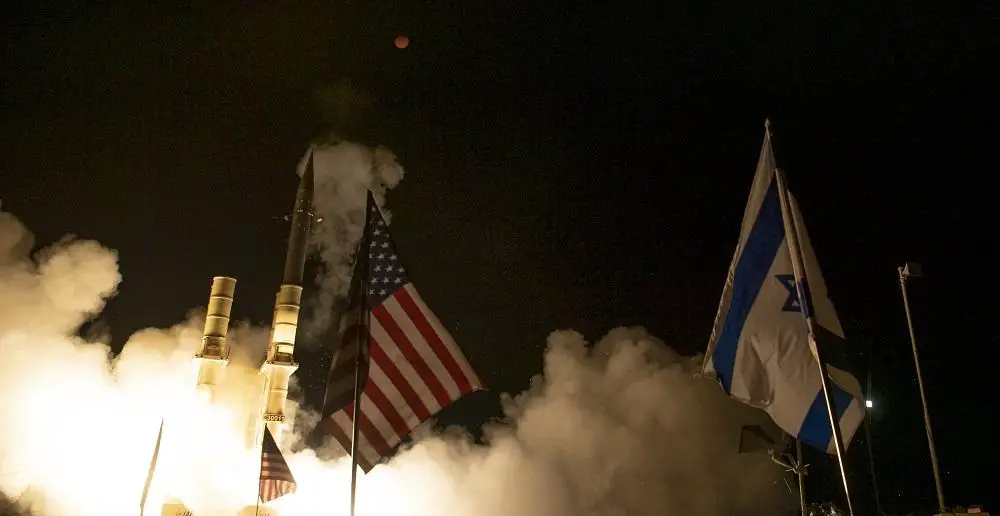The Israel’s Missile Defense Organization together with the U.S. Missile Defense Agency and Israel Defense Forces (IDF) conducted a successful flight test of the Arrow 3 Weapon System (AWS 3), which is designed to intercept ballistic missiles outside of the earth’s atmosphere. The flight test was led by Israel Aerospace Industries (IAI). AWS 3 operational radars array detected the target and transferred data to the BMC, which analyzed the data and established a defense plan. After the defense plan was established, two Arrow-3 interceptors were launched toward the target and successfully completed the mission. According to the chairman of the Israeli Space Agency, Arrow 3 may serve as an anti-satellite weapon, which would make Israel one of the world’s few countries capable of shooting down satellites.
The Arrow 3 or Hetz 3 is an exoatmospheric hypersonic anti-ballistic missile, jointly funded, developed and produced by Israel and the United States. Undertaken by Israel Aerospace Industries (IAI) and Boeing, it is overseen by the Israeli Ministry of Defense’s “Homa” (Rampart) administration and the U.S. Missile Defense Agency. It provides exo-atmospheric interception of ballistic missiles (during the space-flight portion of their trajectory), including intercontinental ballistic missiles (ICBMs) carrying nuclear, chemical, biological or conventional warheads. With divert motor capability, its kill vehicle can switch directions dramatically, allowing it to pivot to see approaching satellites. The missile may have a reported flight range of up to 2,400 km (1,500 mi).

In August 2008 the Israeli and United States governments began development of an upper-tier component to the Israeli Air Defense Command, known as Arrow 3, “with a kill ratio of around 99 percent”. The main element of this upper tier will be an exoatmospheric interceptor, to be jointly developed by IAI and Boeing. Among the advanced sensors considered for Israel’s future multi-tier system, are airborne electro-optical sensors deployed on high flying unmanned aerial vehicles and future enhanced “Green Pine” radars, as well as the AN/TPY-2 radar already deployed in Israel, and operated by U.S. forces. Stark, a U.S.-based subsidiary of Israel Aerospace Industries, was chosen to manufacture canisters for the Arrow 3, and made the first delivery in September 2018.
Arrow 3 should be able to intercept ballistic missiles, especially those carrying weapons of mass destruction, at altitudes of over 100 km (62 mi), and in greater ranges. It could also be ship-based. Arrow 3 is faster than the Arrow 2 and slightly smaller, weighing nearly half. An Arrow 3 battery is expected to intercept salvos of more than five ballistic missiles within 30 seconds. Arrow 3 can be launched into an area of space before it is known where the target missile is going. When the target and its course are identified, the Arrow interceptor is redirected using its thrust-vectoring nozzle to close the gap and conduct a “body-to-body” interception. Arrow 3 may have a reduced 30-year life-cycle cost. It should use the same launch system as Arrow 2. Reportedly it will cost $2–3 million per unit, while program cost is estimated at some $700–$800 million over three years.
















